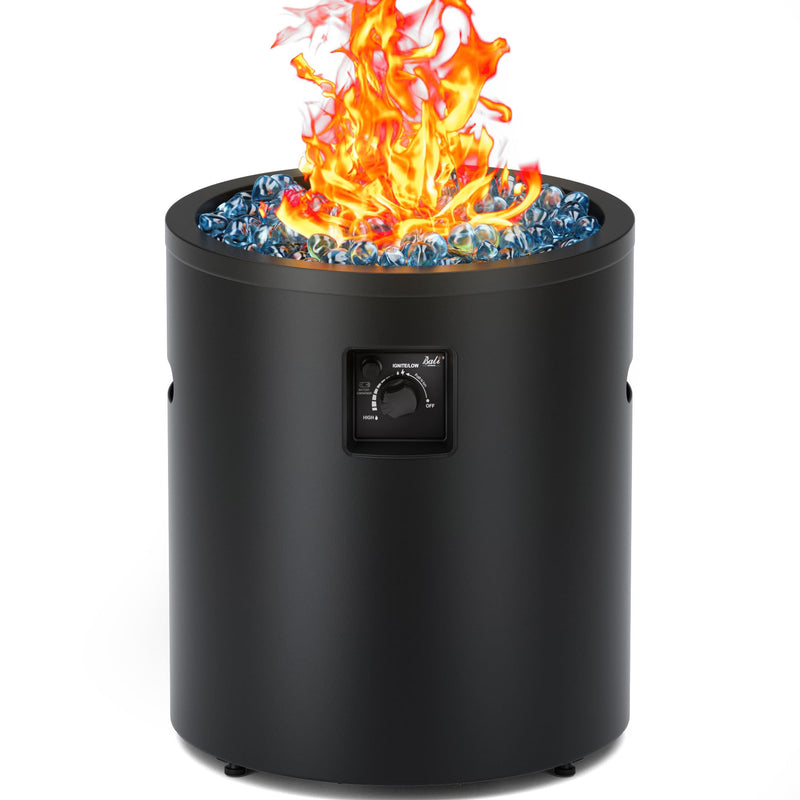Unlock the Secrets to Perfectly Safe and Cozy Wood Fire Pit Experiences!
Wood fire pits have become a beloved centerpiece for outdoor gatherings, drawing friends and family together for warmth, ambiance, and memorable moments under the stars. Whether you're roasting marshmallows, sharing stories, or simply enjoying the flickering flames, a wood fire pit can elevate any evening. However, with great enjoyment comes the responsibility of ensuring safety and comfort. Understanding how to use a wood fire pit safely, choosing the right firewood, and maintaining your fire pit are crucial elements that can enhance your experience. This article will guide you through these essential aspects to ensure your time around the fire is both enjoyable and secure.

Understanding Wood Fire Pits
A wood fire pit is essentially an outdoor structure designed to contain and radiate fire safely. These pits come in various designs, from simple DIY versions to elegant, professionally crafted models. Commonly used for gatherings, they provide a perfect backdrop for socializing, storytelling, and enjoying the night air. The benefits of having a wood fire pit extend beyond aesthetics; they offer warmth on chilly evenings, create an inviting atmosphere, and can even serve as a cooking source for outdoor meals. Imagine sitting around the crackling fire with friends, the warmth wrapping around you like a cozy blanket, while the aroma of wood smoke mingles with laughter and conversation. It’s an experience that many cherish, especially during fall and winter months.
Safety Tips for Using a Wood Fire Pit
Safety should be your top priority when using a wood fire pit. Start by choosing the right location; your fire pit should be placed on a non-flammable surface, such as gravel or stone, and at least ten feet away from flammable structures like wooden decks, fences, or trees. Always use a fire pit screen to prevent embers from escaping and potentially igniting nearby materials. When lighting a fire, use dry kindling and avoid accelerants like gasoline, which can create uncontrollable flames. Once the fire is lit, keep a close eye on it, especially if children or pets are nearby. Extinguishing the fire properly is as crucial as lighting it; pour water over the ashes until they are cool to the touch, ensuring that no embers remain. These safety measures not only protect you and your loved ones but also preserve the integrity of your surroundings.
Choosing the Right Firewood
The type of firewood you choose can significantly impact your wood fire pit experience. Hardwoods, such as oak, hickory, and maple, are ideal because they burn hotter and longer than softwoods. They produce less smoke and fewer sparks, making them safer for outdoor use. On the other hand, softwoods like pine and fir ignite quickly and are excellent for starting a fire, but they burn faster and can produce more smoke and creosote. Seasoned wood, which has been dried for at least six months, is preferred as it burns more efficiently and produces less smoke compared to green wood, which contains high moisture content. A friend of mine once shared a story about using freshly cut pine in their fire pit; while it lit up quickly, the smoke and popping embers turned a cozy evening into a frantic dash for cover. Choosing seasoned hardwood not only enhances your fire experience but also makes for a more pleasant evening.
Maintaining Your Wood Fire Pit
Regular maintenance of your wood fire pit is essential for safety and longevity. After each use, allow the ashes to cool completely before disposing of them; this prevents any risk of fire and keeps your area tidy. It's advisable to clean the fire pit regularly, removing debris and inspecting it for any signs of wear or damage. Check the fire pit structure for cracks or instability, especially if it’s made of stone or metal. Seasonal maintenance is also important; consider covering your fire pit during the off-season to protect it from the elements. If you live in an area with significant weather changes, you may need to assess the fire pit for rust or corrosion periodically. Proper care ensures that your wood fire pit remains a safe and inviting feature in your backyard for years to come.
Creating Lasting Memories with Your Wood Fire Pit
In summary, enjoying a wood fire pit can be a delightful experience filled with warmth and camaraderie. By prioritizing safety, selecting the right type of firewood, and maintaining your fire pit diligently, you can create a cozy and enjoyable environment for gatherings with family and friends. Embrace the magic of outdoor evenings spent around the fire, and remember to enjoy these moments responsibly. With the right practices in place, your wood fire pit can be a source of joy and comfort for many seasons to come.








